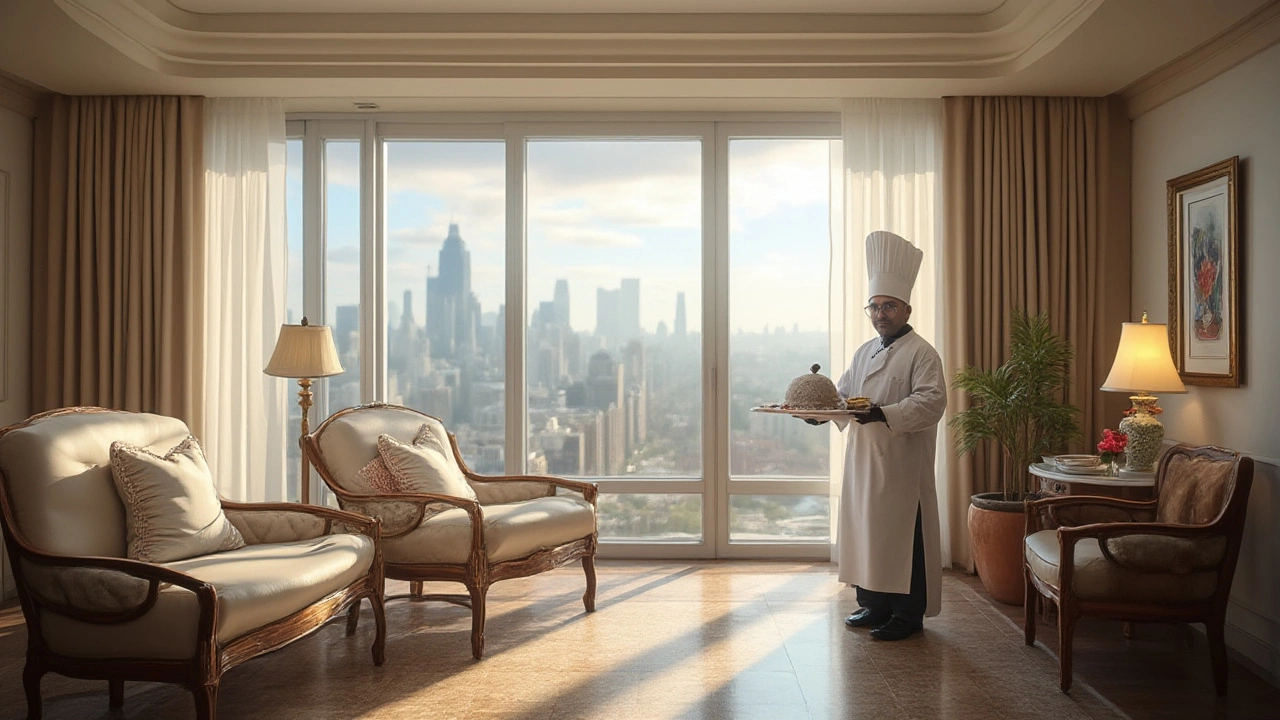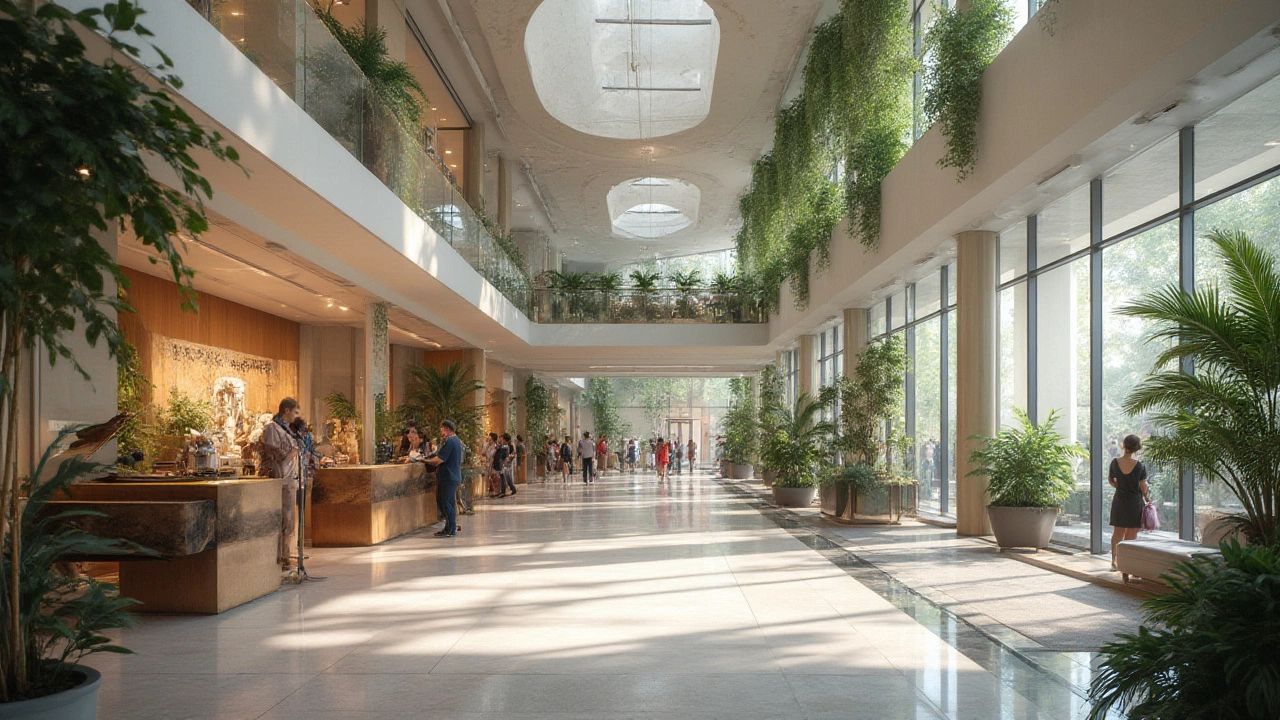
Far from the beep-filled, crowded hospital wards in TV dramas, there are medical centers in the US that look and feel like five-star hotels—maybe better. Picture marble lobbies, original art on the walls, a private gourmet chef, spa treatments, and a view of Manhattan from your suite. This is reality at the most luxurious hospitals in America, and if you thought healthcare was all scrubs and fluorescent lights, you're in for a surprise.
What Defines "Luxury" in a US Hospital?
Take a walk inside the top-tier US hospitals, and you might feel like you’ve stepped into another world. The bar for luxury has moved far beyond private rooms—think curated art collections, butlers, and even private yoga instructors. The king of this world right now is NewYork-Presbyterian’s David H. Koch Center, consistently topping lists for being the most luxurious hospital in the US. Facilities like Cedars-Sinai Medical Center in Los Angeles and Mount Sinai in New York are not far behind, but the Koch Center has set the standard for what absolute plush, patient-centered care looks like in America.
So, what makes a hospital truly "luxurious"? First, location plays a part—most are in prime urban spots, close to major financial, fashion, and entertainment hubs. That means celebrities, foreign dignitaries, and top business leaders are often patients. But the real markers are privacy, elite amenities, and truly personalized care. Exclusive hospital floors—sometimes called "VIP suites"—are sealed off to all but essential staff. These aren't just fancy rooms; they’re mini-apartments, often with separate living rooms, kitchenettes, spa bathrooms, workspaces, and big windows overlooking dramatic cityscapes. Some even come with grand pianos or personal assistants for family members.
Other perks include concierge service, bathrobes and slippers from luxury brands, pillow menus, and in-room iPads for digital room controls. Need your own wine fridge? At Cedars-Sinai’s Deluxe Maternity Suites, they’ll arrange it. In the Koch Center’s private wing, a chef can prepare custom meals, and spa therapists offer massage, facials, or guided meditation—all in the comfort of your suite. “It’s less like being in a hospital and more like recovering in a private club,” said one recent patient. Around-the-clock security ensures press and paparazzi can’t get close. And yes, if you want a DNA-matched menu or roses from Ecuador, just ask the concierge. It’s all part of the experience.
If you peek at the guest list, you’d see A-listers, foreign royalty, and some of the world’s wealthiest people. Michael Bloomberg reportedly donated $1.8 billion to Johns Hopkins University, with strings tied to both medical research and the luxury patient experience. It’s not all flash though—these places are also leading medical innovation, from robotic surgery to the newest cancer protocols. So when money’s no object, you can expect top medical brains and top comfort.
Amenities That Rival Five-Star Resorts
It isn’t just enough to have advanced technology and world-class doctors; in the world of luxury hospitals, the "extras" are what set them apart. You want a list of amenities? Here’s what you might find at a place like the David H. Koch Center or Cedars-Sinai's private suites:
- Private, soundproofed suites with designer furniture and full bathrooms
- 24/7 butler or personal concierge service
- Bespoke linens, sleep masks, and turn-down service every evening
- Gourmet meals by award-winning chefs, catered to all dietary needs
- Spacious sitting areas for family and visitors
- Fine art, natural light, and advanced climate control in every room
- Private terraces or panoramic windows overlooking skyline views
- Home theater and sound systems, free streaming services
- Onsite spa offering massage, acupuncture, salon services, and yoga
- VIP parking, private entrances/exits, and discreet transport options
- Personal stylists, barbers, and even tailors for special post-op occasions
- Fast-track lab tests and personal pharmacist consultations
- Dedicated translators and cultural liaisons for international clients
All of this comes at a price, of course. Just how much? For the Koch Center’s VIP floors, rooms can run close to $4,000 a night, on top of medical expenses. Cedars-Sinai’s maternity suites are notorious in celebrity circles for bills running six figures for a week’s stay. Insurance rarely covers these luxury perks—it’s strictly out-of-pocket, or part of exclusive executive health plans. But, honestly, if you’re booking a room there, you probably aren’t worrying about the bill.
It’s not only about comfort, but about wellness. Spaces are designed to reduce anxiety and stress, which the hospital’s research shows actually improves recovery rates. Recent studies from Harvard pointed out that patients recovering in sunlit, art-filled spaces needed less pain medication and were discharged days sooner than those in traditional rooms. Some hospitals even display data on patient satisfaction rates and recovery times to future clients, showing that a luxurious setting is more than an aesthetic—it's a health boost.

Who Stays There and Why?
So, who actually becomes a client at these top-tier hospitals? It’s not just celebrities, although you’ll find plenty of famous names on guest lists. CEOs, professional athletes, foreign heads of state, and tech founders all book into these luxury suites. Privacy and safety pull a lot of high-profile people in, especially those who can’t risk being spotted or disturbed during vulnerable moments.
The real pull is their ability to cater to every possible personal or cultural preference. For example, Mount Sinai Hospital’s international VIP program brings in translators fluent in dozens of languages, personal security staff, and even chefs that cater to dietary rules from across the globe. David H. Koch Center is famous for post-partum suites for billionaire families—these include everything from lactation consultants to neonatal nurses on 24/7 call, all shielded from press or visitors. For high-powered execs, there are meeting rooms, high-speed Wi-Fi, and full office amenities so business doesn’t have to pause for an illness.
Mental health isn’t left behind either. Dedicated psychologists, mindfulness coaches, and art therapists make the rounds daily. Patients can book massage therapy, guided meditation, or even hypnotherapy right to their bedside. And when the staff says "anything you want," they mean it—one legendary (and verified) request at Cedars-Sinai was for a private screening of a just-released film, complete with popcorn and velvet seats, for a film mogul patient and his family. It happened the same evening.
But here’s something you might not expect: luxury hospitals are quietly open to "regular rich people" too—heritage business families, lottery winners, or anyone willing to cover the cost. That said, most of us wouldn’t want the bill at the end.
Behind the Scenes: How Luxurious Hospitals Shape Modern Care
You might wonder if all these plush extras really matter for healthcare. The answer: they actually do. The facilities and the extra attention to detail aren’t just about pampering; they’re about setting new benchmarks. The intense demands of high-profile clients often push hospitals to innovate way faster than in the public system, especially when it comes to privacy tech, infection prevention, patient tracking, and even personalized medicine based on genetic profiles.
Most luxurious hospital US floors are often the test beds for things that eventually filter down to regular patient care—like interactive in-room tech to control lighting, music, and temperature (now common in many large urban hospitals), or the integration of holistic wellness with post-surgical recovery plans. Oncology, neurology, and maternity wings benefit the most, as they see a larger share of ultra-wealthy clients seeking bespoke care for complex needs. This cycle of luxury-driven innovation explains why medical tourists from Europe, Asia, and the Middle East flock to New York, Boston, and Los Angeles hospitals.
The facilities often run like five-star hotels behind the scenes, too. Think full-time event planners, gourmet food and beverage managers, and art curators on staff. And it isn’t just about what happens in the patient rooms. The lobbies and public spaces at the Koch Center, for example, are designed to feel like art galleries, while underground tunnels and drive-up elevators let guests bypass everything and everyone if desired.
If you’re curious about the numbers, here’s a quick peek at what you may expect at America’s top luxury hospitals:
| Hospital Name | Location | VIP Suite Nightly Rate | Notable Features |
|---|---|---|---|
| NewYork-Presbyterian David H. Koch Center | New York City | $3,500 - $4,000 | Gourmet dining, private spa, skyline views |
| Cedars-Sinai Medical Center | Los Angeles | $3,800 (Deluxe Maternity Suite) | Private chef, personal security, entertainment systems |
| Mount Sinai Hospital | New York City | $2,500 - $3,500 | Multilingual staff, VIP executive program, art therapy |
| Johns Hopkins Hospital | Baltimore | $2,800 - $3,800 | Dedicated family suites, genetic counseling |
If you’re ever in need of top-tier care and have a limitless budget, you’ll get more than just great doctors in these places. Expect real silverware, personal aromatherapy, ultra-quiet rooms, customized everything, and a nurse-to-patient ratio most hospitals can only dream of.
For anyone wondering if all this is “worth it”—luxury hospital life is in a universe of its own. The people who pay the price get privacy, speed, and comfort most folks will never see. While most of us can’t (and maybe will never want to) live that world, it’s fascinating to peek behind the golden doors. If nothing else, health tourism trends prove one thing: there are always new ways to redefine comfort in medicine, and for the super-rich, even hospitals strive for fabulous.